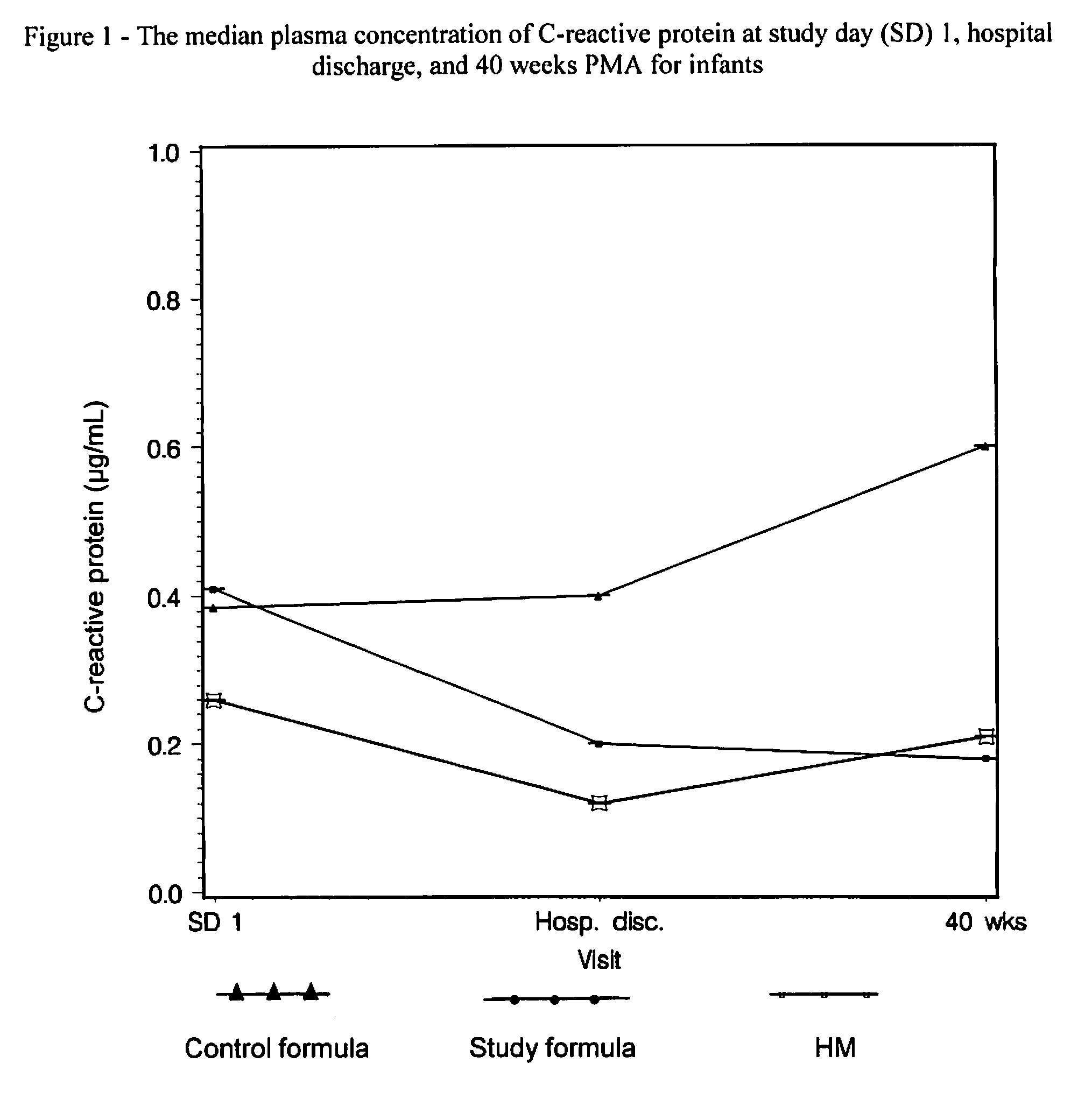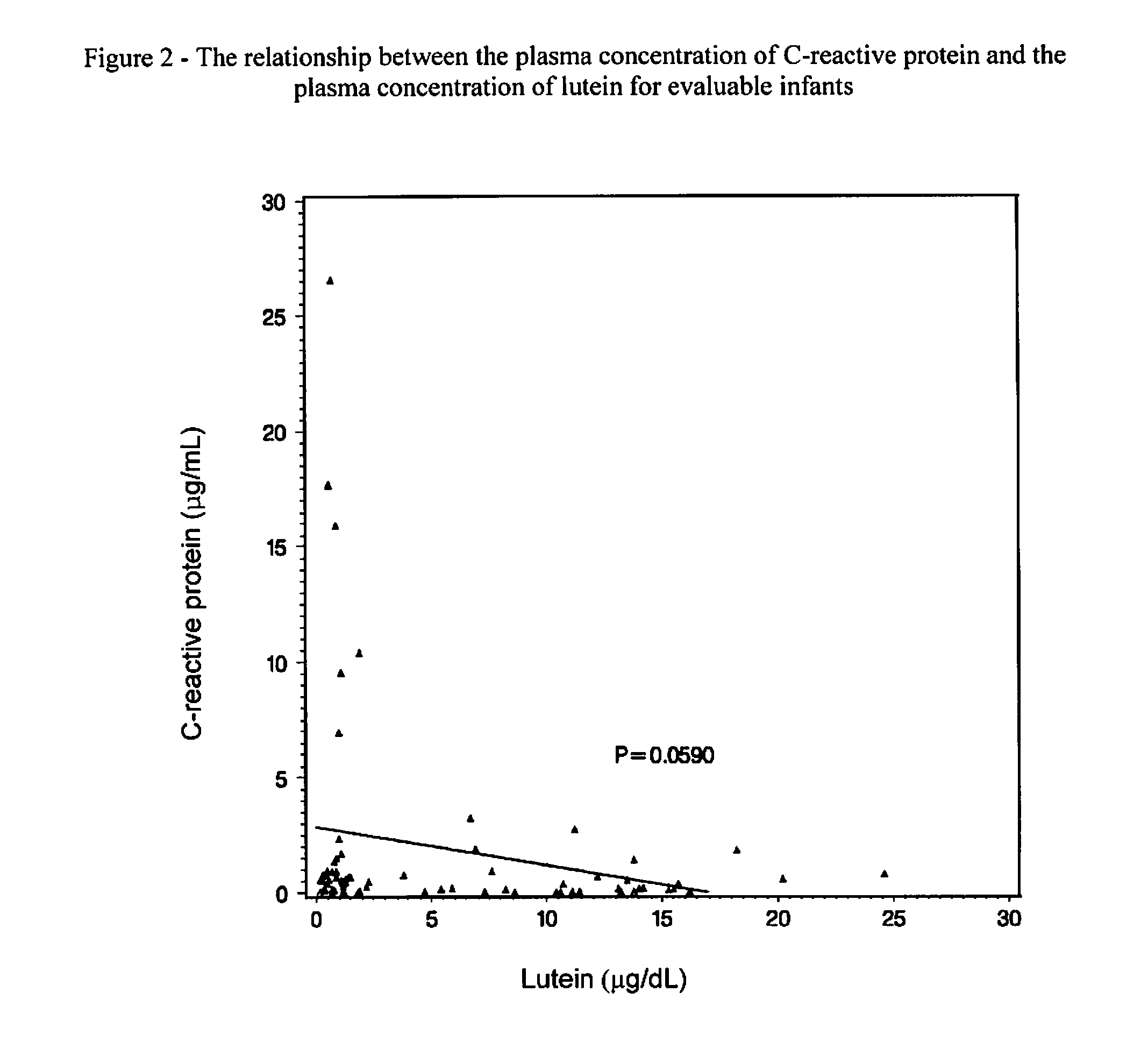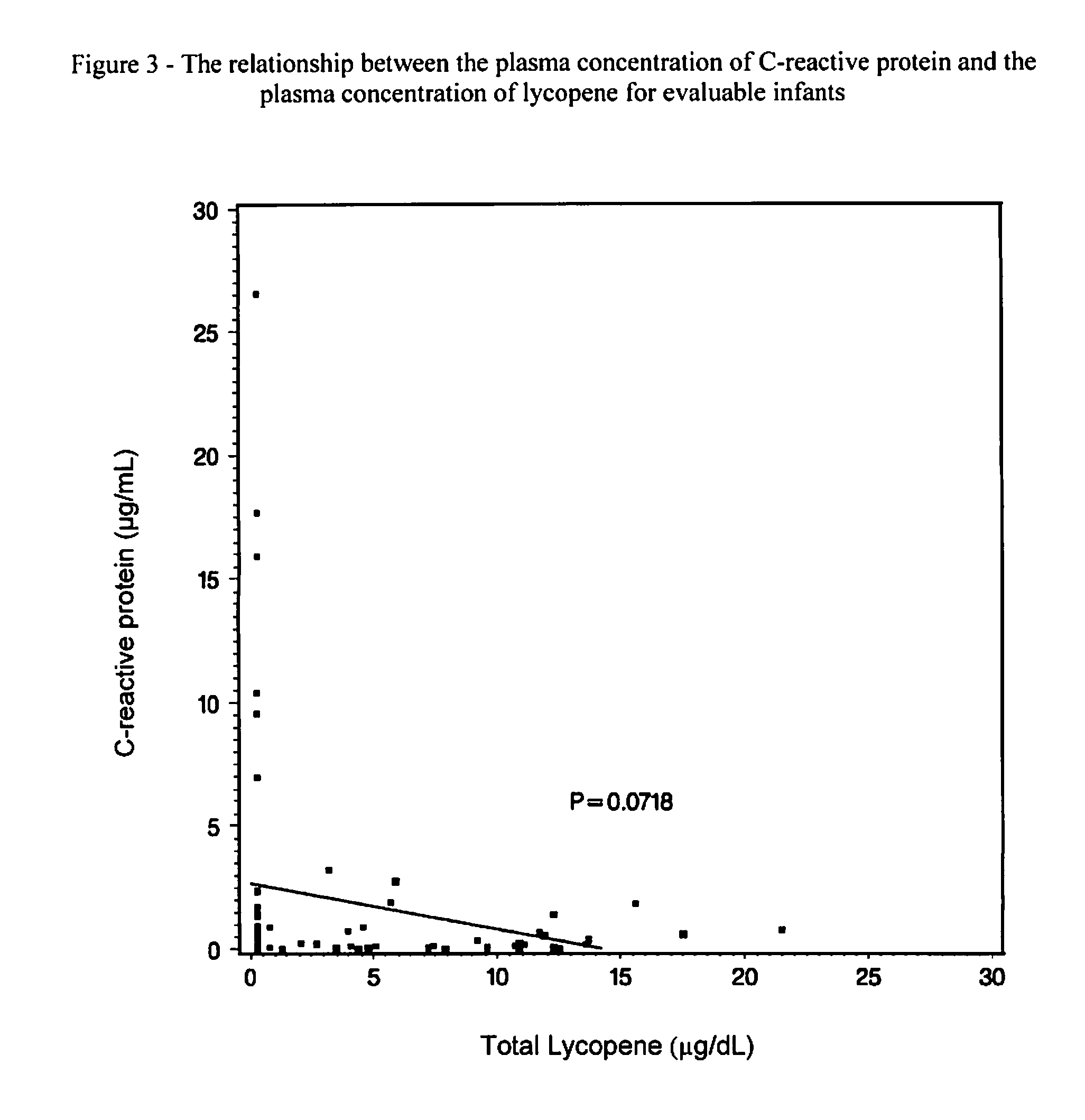Methods of Modulating Inflammation in Preterm Infants Using Carotenoids
a carotenoids and preterm infant technology, applied in the field of preterm infant formulas, can solve the problems of reducing the plasma concentration of c-reactive protein in the preterm infant, and achieve the effect of reducing the plasma concentration of c-reactive protein and facilitating the modulation of the level of inflammation
- Summary
- Abstract
- Description
- Claims
- Application Information
AI Technical Summary
Benefits of technology
Problems solved by technology
Method used
Image
Examples
examples
[0065]The following examples further describe and demonstrate specific embodiments within the scope of the present disclosure. The examples are given solely for the purpose of illustration and are not to be construed as limitations of the present disclosure, as many variations thereof are possible without departing from the spirit and scope of the disclosure. All exemplified amounts are weight percentages based upon the total weight of the composition, unless otherwise specified.
[0066]Each of the exemplified formulas is fed to humans to provide sole, primary, or supplemental nutrition. Each formula contains carotenoids as described herein, and can be used to modulate inflammation and / or levels of C-reactive protein in preterm infants.
examples 1-15
[0067]The following examples illustrate preterm infant formulas of the present disclosure, including methods of making and using the preterm infant formulas. Formula ingredients for each batch are listed in Table 2. Exemplary amounts of beta-carotene, lutein, and lycopene provided by each formula when prepared as a ready-to-feed (RTF) formula, which may be varied depending on the amount of water used to prepare the RTF formula, is set forth in Tables 3 and 4.
TABLE 2Preterm Infant Formulas Comprising CarotenoidsExample 1Example 2Example 3QuantityQuantityQuantityper 1000per 1000per 1000IngredientskgkgkgWater (kg)681.6747795Non Fat Dry Milk (kg)180.7127.398.0Corn syrup (kg)38.3938.835.19Corn syrup solids (kg)36.4736.933.43Medium chain triglycerides (kg)31.6020.815.42Soy oil (kg)18.9612.49.25Whey Protein Concentrate (kg)14.1116.612.69Coconut oil (kg)11.567.485.64Lactose (kg)7.1316.317.235% KOH (kg)6.375.104.86Potassium hydroxide solids (kg)0.3190.2550.243Ultra-micronized tricalcium2.812...
example 16
[0078]A study was conducted to evaluate and compare the plasma concentrations of beta-carotene, lutein, and lycopene in preterm infants fed a regimen of preterm infant formulas with mixed carotenoids to plasma concentrations in preterm infants fed a regimen of preterm infant formulas with no added carotenoids, and to a reference group of human milk (HM)-fed preterm infants. Skin carotenoid concentrations in preterm infants fed preterm infant formulas with mixed carotenoids were also compared to those in the preterm infants fed preterm infant formulas with no added carotenoids and to the reference group of HM-fed preterm infants.
[0079]The study was a randomized, controlled, double-blinded, parallel study. Two-hundred three preterm infants from birth to 21 days of age were enrolled. Formula fed infants were administered an in-hospital formula (Similac® Special Care® formula (SSC)) with (study formula) or without (control formula) added carotenoids from start of enteral feeding until 4...
PUM
| Property | Measurement | Unit |
|---|---|---|
| birth weight | aaaaa | aaaaa |
| temperature | aaaaa | aaaaa |
| temperature | aaaaa | aaaaa |
Abstract
Description
Claims
Application Information
 Login to View More
Login to View More - R&D
- Intellectual Property
- Life Sciences
- Materials
- Tech Scout
- Unparalleled Data Quality
- Higher Quality Content
- 60% Fewer Hallucinations
Browse by: Latest US Patents, China's latest patents, Technical Efficacy Thesaurus, Application Domain, Technology Topic, Popular Technical Reports.
© 2025 PatSnap. All rights reserved.Legal|Privacy policy|Modern Slavery Act Transparency Statement|Sitemap|About US| Contact US: help@patsnap.com



